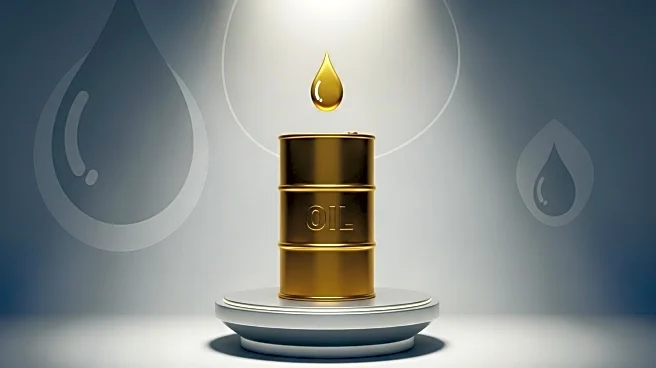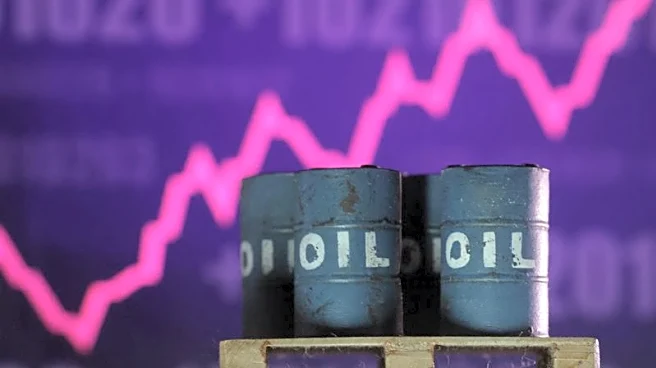What is the story about?
What's Happening?
OPEC has released its September Monthly Oil Market Report, maintaining its forecast for global oil demand growth at 1.3 million barrels per day (bpd) for 2025. The demand growth is primarily driven by non-OECD economies, with minimal contribution from OECD countries. For 2026, OPEC anticipates a slight increase in demand to 1.4 million bpd. The report highlights contentious supply figures, with non-OPEC+ producers expected to add 0.8 million bpd in 2025 and 0.6 million bpd in 2026, led by the U.S., Brazil, Canada, and Argentina. OPEC's output in August increased by over half a million bpd to 42.4 million, following a modest quota rise. Despite the production increase, prices rose due to perceived symbolic rather than actual supply changes.
Why It's Important?
The steady demand forecast and contentious supply figures have significant implications for global oil markets. The U.S. and other non-OPEC+ countries are poised to increase production, potentially affecting global oil prices and market dynamics. The symbolic nature of OPEC's production increase suggests underlying challenges in meeting quotas, which could lead to price volatility. The geopolitical landscape, including new Russian sanctions, further complicates supply predictions. Stakeholders in the oil industry, including producers and consumers, must navigate these uncertainties, impacting investment decisions and energy policies.
What's Next?
The oil market faces potential shifts as OPEC+ retains flexibility to adjust production quotas. The ongoing supply debate may lead to strategic decisions by major oil-producing countries, influencing global oil prices. Market participants will closely monitor geopolitical developments, such as Russian sanctions, which could alter supply dynamics. The balance between demand and supply remains delicate, with potential implications for energy security and economic stability.
AI Generated Content
Do you find this article useful?
















